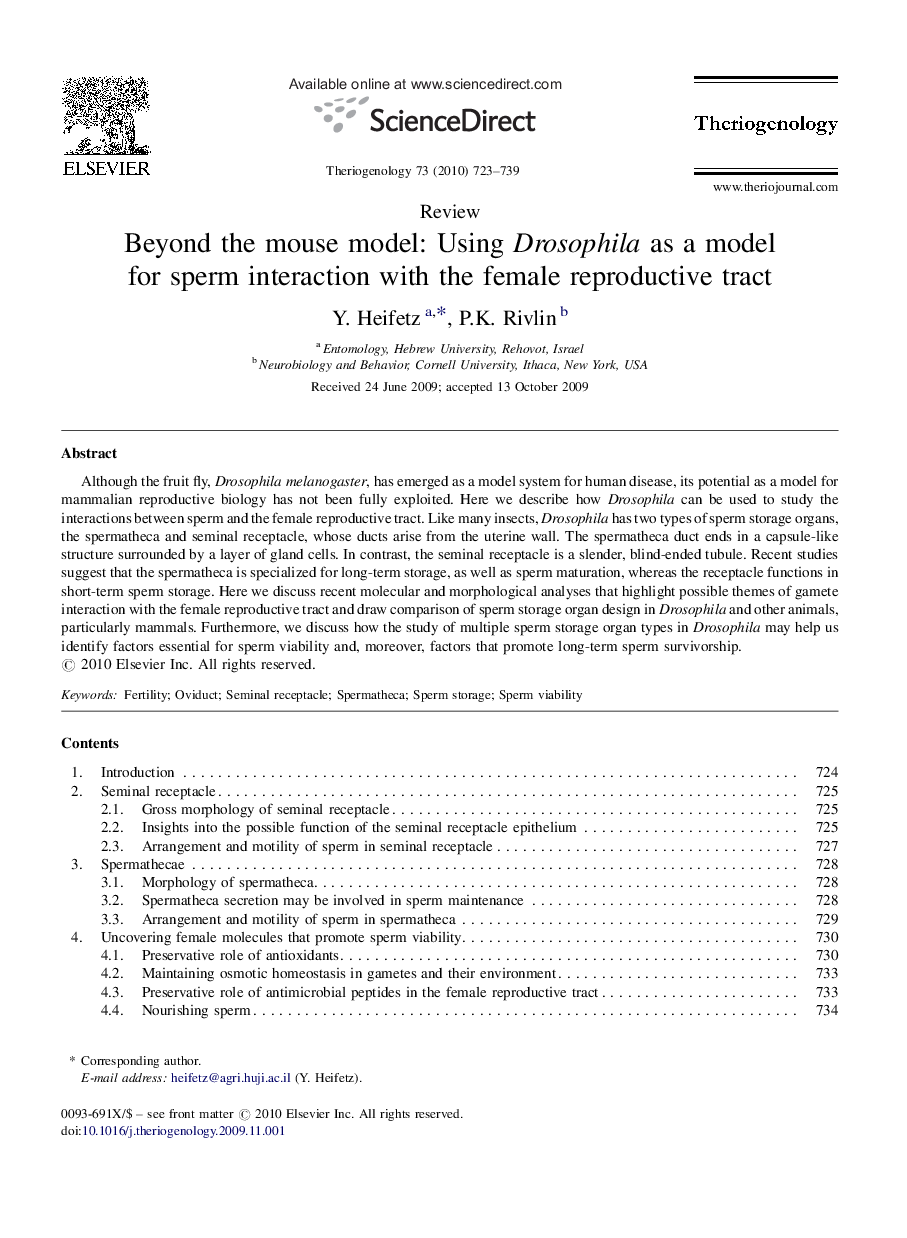| Article ID | Journal | Published Year | Pages | File Type |
|---|---|---|---|---|
| 2095856 | Theriogenology | 2010 | 17 Pages |
Although the fruit fly, Drosophila melanogaster, has emerged as a model system for human disease, its potential as a model for mammalian reproductive biology has not been fully exploited. Here we describe how Drosophila can be used to study the interactions between sperm and the female reproductive tract. Like many insects, Drosophila has two types of sperm storage organs, the spermatheca and seminal receptacle, whose ducts arise from the uterine wall. The spermatheca duct ends in a capsule-like structure surrounded by a layer of gland cells. In contrast, the seminal receptacle is a slender, blind-ended tubule. Recent studies suggest that the spermatheca is specialized for long-term storage, as well as sperm maturation, whereas the receptacle functions in short-term sperm storage. Here we discuss recent molecular and morphological analyses that highlight possible themes of gamete interaction with the female reproductive tract and draw comparison of sperm storage organ design in Drosophila and other animals, particularly mammals. Furthermore, we discuss how the study of multiple sperm storage organ types in Drosophila may help us identify factors essential for sperm viability and, moreover, factors that promote long-term sperm survivorship.
